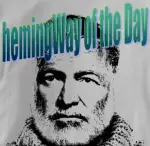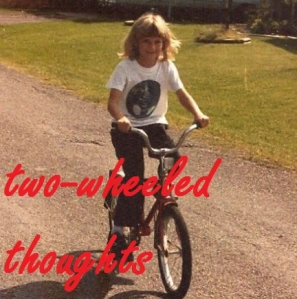 Eula Biss, who I adore for Notes From No Man’s Land, with her second nonfiction work: On Immunity.
Eula Biss, who I adore for Notes From No Man’s Land, with her second nonfiction work: On Immunity.
The precipitating event here is Biss’s becoming a mother. She has a new baby to worry about, decisions to make about vaccinations, and the H1N1 flu strain is spreading frighteningly. She’s surrounded by other mothers who have a wide range of feelings about vaccines and immunizations. In danger after giving birth, Biss is given a transfusion of blood from a public blood bank. These events and opinions swirl in her head, and because she’s Eula Biss, she does research. She reads widely, from antiquity through present-day research articles and conspiracy theories; she interviews doctors, including her father, an oncologist. In fact this is a family affair, calling not only on the father (a sympathetic, sweetly caring, somewhat fatalistic man) but Biss’s mother, a poet, and sister, a Kant scholar and professor of ethics. Biss’s son turns out to battle significant allergies; she and her husband have to decide whether to have him undergo surgery, as well as simple vaccines.
Obviously, the timely subject is the “anti-vaxxers” movement (a term Biss never uses), with their claims that vaccines can cause autism, among other things (the autism claim in particular unsupported by any scientific evidence, although as she points out, a theory once voiced can never be retracted). Vaccination and variolation go back a ways, though, and part of what Biss undertakes here is a social history from the beginnings of germ theory and the Jenner vaccine through the present. Because she is a literary mind, she is also concerned with myth, literary history, and linguistics: in the first few pages, she searches for synonyms for protect and comes to shield, shelter, secure, and then inoculate. The very first page deals with “the first story I ever heard about immunity”: that of Achilles. She ranges across Voltaire’s Candide, Rachel Carson’s Silent Spring, and Bram Stoker’s Dracula, the latter carrying a lot of weight especially late in the book. In other words, it’s the kind of essaying I love: multidisciplinary examination of an important topic of our time and of all times.
There is a central ethical question here, as Biss interrogates the idea of ‘herd immunity’ (unfortunately, as she points out, sounds awfully close to ‘herd mentality’ with its negative association). If only most of us get immunized, a few of us can get away with skipping it; but the threshold for safety within that model is detectable only when we’ve passed it. And the few who skip vaccines, and get away with it, thereby relying on the many who did their civic duty: well, there’s something a little selfish about that, right? Biss has said in an interview (crediting her sister with the idea) that this is much like traffic laws. One or two people can blow through stop signs and get away with it if most of us are obeying the law. But if enough of us disregard that stop sign, soon there will be carnage, and some innocent rule followers will be hurt as well. I’m also thinking about mountain bike trails, because it just won’t stop raining here where I live. Sure, the trails will recover if a few people ride them wet. But only because most of us don’t. Which actually makes the few who ride ruts into the mud really selfish, in my opinion. Out there having their fun while I stay home and wait less and less patiently for the right conditions.
This is also about the extent to which each of us is an individual, and in turn part of something larger, like it or not. The immune system was not introduced as a concept until fairly recently, in the 1970s. Biss muses on the blur between the natural body and the body politic, the ways in which we are undeniably individual (I can clearly see where my body ends) and undeniably united (as in shared risk).
This book is full of metaphor: the original use of ‘inoculation’ as a metaphor for grafting, “as apples are cultivated by grafting a stem from one tree onto the roots of another,” because the initial inoculation was variolation, the skin slit and infectious material placed inside. “It was a metaphor for grafting a disease, which would bear its own fruit, to the rootstock of the body.” Later, “Vaccinating in advance of the flu, critics suggest, was a foolish preemptive strike. But preemption in war has different effects than preemption in health care–rather than generating ongoing conflict, like our preemptive strike against Iraq, preventive health care can make further health care unnecessary.”
These are some of the many beauties of On Immunity. I learned a lot. And I appreciate the ways in which it is like Notes From No Man’s Land. Both deal with what it means to be a citizen, and what damage fear can do. (Also, it will perhaps not surprise you to learn that racism has played a role in the history of immunization.) But, I don’t know, this one did not blow me to pieces like the earlier book did. For one thing, the organization of this book is very different from that last one. On Immunity reads like a single, long narrative. Page breaks are merely breaks; the thread (or various braided threads) connects each smoothly. This is not an essay collection but a long essay in (untitled) chapters. Notes is properly a collection, with an organizing scheme, meaningfully titled chapters, and an order to them.
It has been a good two and a half years since I read that one (and went back and reread a short section a little more recently), but what I recall is incandescent line-by-line writing, fascinatingly complex structure, and great subtlety. This one, On Immunity, is a good book in many ways. But none of these three elements struck me. The writing is always graceful and clear and communicative and often clever, but it did not ring for me like poetry. The structure – well, there is still a structure, a braid, and a range. There are recurring characters (the family members). But I missed a table of contents that could almost be read itself like a song. And the subject matter is faced much more head-on. Not a criticism; but a very different kind of book.
Here is a subtlety I did appreciate, though. For Biss’s subtitle, An Inoculation, I will let her tell it. (From the same Barnes and Noble interview, linked above.)
The subtitle actually started out as a little joke to myself. I didn’t intend for it to remain as the subtitle. But once that subtitle stuck I did start to think of certain aspects of the book that I was uncomfortable with as working like an inoculation works. One of the things I was reluctant to do in this book was repeat fears of vaccination and risk spreading them further, because many of the fears of vaccination that I write about in this book were fears that I didn’t know about and didn’t have until other mothers shared them with me. I felt a little bit infected by fears I hadn’t had before, and I didn’t want to participate in doing that more.
So when I started thinking about the book as an inoculation, I saw the possibility that it could work the way a vaccine works. A vaccine introduces a small amount or a tempered version of the virus into the body — just enough to that the body is able to recognize it and deal with it when it encounters it again in the future. So I was thinking that maybe the book would work like this. If I introduced these fears to readers who may not have encountered them yet, perhaps I could introduce them in a way that would better equip those readers to deal with those fears the next time they ran into them.
I’ll end there: with a lovely metaphor for the fine work of this fine book.
Rating: 8 risks.
Filed under: book reviews | Tagged: creative nonfiction, history, literary criticism, nonfiction, science, WVWC MFA reading list | Leave a comment »















